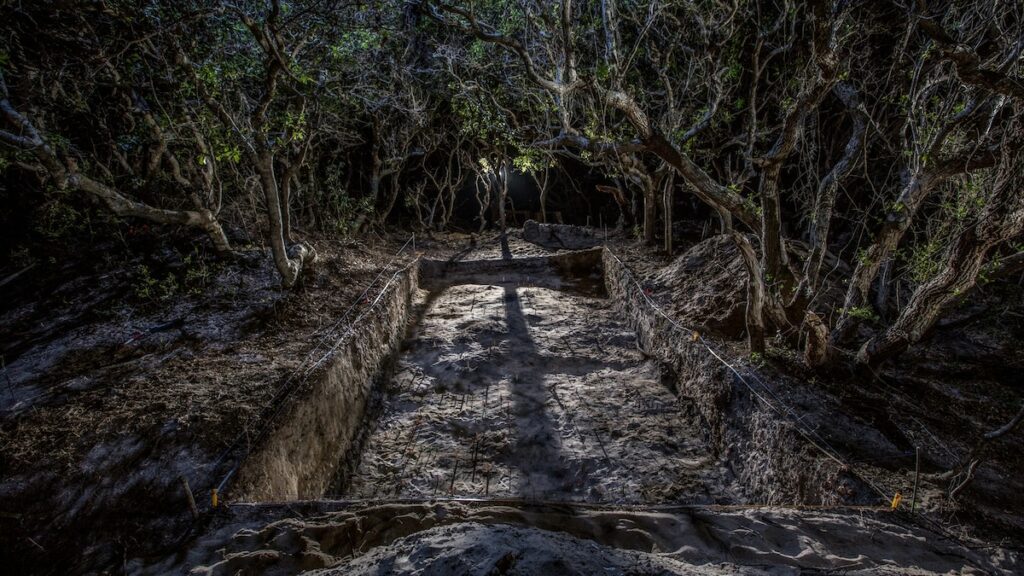Two decades later the English established their first permanent beachhead in the Americas, a hundred miles to the north on the James River, in what is now Virginia. Captain John Smith, the leader of the Jamestown colony, heard from the Indians that men wearing European clothes were living on the Carolina mainland west of Roanoke and Croatoan Islands. Tales of mass slaughter and an enslaved “young maid” circulated in London and Jamestown. Search parties, however, never found any physical proof of the colonists’ fate.
And so it would go for the next 400 years, as one investigation after another into what had happened on Roanoke Island proved fruitless. The absence of evidence spawned wild speculation, hoaxes, and countless conspiracy theories. But in recent years a series of finds at archaeological digs—and a chance discovery at the British Museum—have revealed tantalizing new clues that suggest what happened to the settlers after White departed. Historians, meanwhile, are starting to recognize that Roanoke was more than a passing failure. The effort was, in essence, the Apollo program of Elizabethan England, spanning six years and three major voyages.
The first, in 1584, was a reconnaissance mission. The following year an all-male contingent—with White as expedition artist—defied Spanish claims to North America and arrived on Roanoke hoping to find gold, valuable pharmaceuticals, and a shortcut to the Pacific. Instead they made enemies of their Native American hosts by assassinating their leader. Ragged and hungry, the men caught a ride home less than a year later with a fleet commanded by Sir Francis Drake. The following spring, in 1587, White led a third expedition made up primarily of middle-class Londoners, including his pregnant daughter, Eleanor Dare, as well as 16 other women and nearly a dozen children.
All told, more than a score of oceangoing ships carried hundreds of people across the 16th-century equivalent of interplanetary space. The bold venture dwarfed in size and scope the later—and more renowned—forays to Jamestown and Plymouth, birthed the first corporation in English America, and forged the link between England and the mid-Atlantic coast of North America that seeded both the British Empire and the United States.
“The profound significance of Raleigh’s Virginia voyages to the history and culture of the modern world is often forgotten or undervalued,” writes Neil MacGregor, former director of the British Museum. The museum houses White’s extraordinary paintings, which helped shape Europeans’ conception of the New World and its inhabitants.
Source link : http://www.bing.com/news/apiclick.aspx?ref=FexRss&aid=&tid=66d891b7096749a8b9a0726ef71731a3&url=https%3A%2F%2Fwww.nationalgeographic.com%2Fmagazine%2Farticle%2Flost-colony-roanoke-history-theories-croatoan&c=10621461783705356782&mkt=en-us
Author :
Publish date : 2024-01-02 03:20:00
Copyright for syndicated content belongs to the linked Source.
